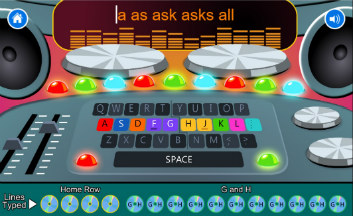Just watch 9yr old Theo, he’s Dyslexic and now typing at 30wpm!
Theo learned to touch type using Englishtype at the Yorkshire Rose Dyslexia Typing Club on a Saturday morning plus practice at home. He’s only 9 years old and is typing at over 30 words a minute now. He learned to touchtype over two years of going to the club but his teacher says his great results are really about his second year when he worked really hard. It’s been such a success, younger brother Oscar is now learning, he is only 7!
Learning to touch type can be life changing for Dyslexic children. It just takes motivation and practice, and is very different from writing with a pen – it uses a different part of the brain. Typing by touch means using the unconscious brain and muscle memory, rather than typing by sight – “hunt & pecking” at the keyboard. Touch typing for Dyslexic children improves spelling & literacy as well as typing speed & accuracy. It gives a much-needed boost to self-esteem for Dyslexic children as they become so successful at both the skill and improve their work. Touch typing decreases cognitive load on the conscious and helps with ADHD/ADD and slow processing and also reduces visual stress, another important element for many children, increasing quantity & quality of written work.
Touch typing is a very different way to learn to spell – spelling becomes unconscious, the words are programmed into the muscle memory, great for tricky words that are so common in the English language. Spelling is patterns on the keyboard and finger movements – it’s not trying to remember what the letters are and how to string them together when writing with a pen.
Touch typing is also a standard way to prove that typing is your child’s “normal way of working” and getting them access to a laptop and away from the often-dreaded pen (and worse, pen licence). Watching children like Theo whose fingers are just flowing on the keyboard is very impressive and impossible to deny the level of skill and the difference that access to a laptop makes to the ability to produce written work that is reflective of true potential not limited by handwriting and spelling.
Try the free demo and get your child learning right away. It’s sad, but very few schools teach touch typing and very few are aware of the real benefits it brings. Be aware of the difference between real typing by touch (all these unconscious benefits) and “better keyboard familiarity” which is just faster hunt & peck. Many teachers, specialist teachers & assessors don’t realise the difference that actual typing by touch will make. It’s all about the process in the brain – not whether you can type Q with your little finger.







